Pattadakal in Brief
Situated in Bijapur district of Karnataka, Pattadakal earns fame for its ancient Indian group of buildings which was a holy place for royal coronation. Location and natural backdrop of this temple complex is praiseworthy and changes the overall set up of the temples. Malaprabha River is located to the north of this complex, whereas a small village is situated to the south what transform Pattadakal to a sort of holy city.
The city houses a series of eight Hindu temples dedicated to Lord Siva which were built for the royal worshipping purpose of Chalukya Dynasty. All of these temples are in architectural splendor.
The Sangamesvara temple is known to be the oldest temple in Pattadakal. Inspired by the style of Rekha Nagara Prasada, Galaganatha temple was built between 8th and 9th century.
Following the architectural magnificence of the buildings set in early Chalukyan style, the Kasivisvesvara temple was built. The Mallikarjuna temple was built to celebrate the victory of Vikramaditya II over the Pallavas. It was commissioned by Rani Trilokyamahadevi who also constructed the Virupaksha temple inspired by the style of Kailasanatha temple at Kanchipuram.
Located on the banks of the Malaprabha River, this UNESCO World Heritage Site is a testament to the richness of Chalukyan architecture during the 7th and 8th centuries and is renowned for its intricately chiselled temples. The temples in Pattadakal bear testimony to the richness and timeless splendour of the Chalukyan architecture. It has a cluster of 10 major temples, which showcase some striking architectural features. The world-famous geographer Ptolemy (150 AD) has documented the town as “Perti gal”. It was even used as the ceremonial centre where kings were crowned and commemorated. Pattadakal has temple architecture from Dravidian, Aryan and a mixture of both styles in its temple complex; probably making it the only one of its kind in India. There is a sculpture gallery maintained by Archeological Survey of India within the Pattadakal temple complex.
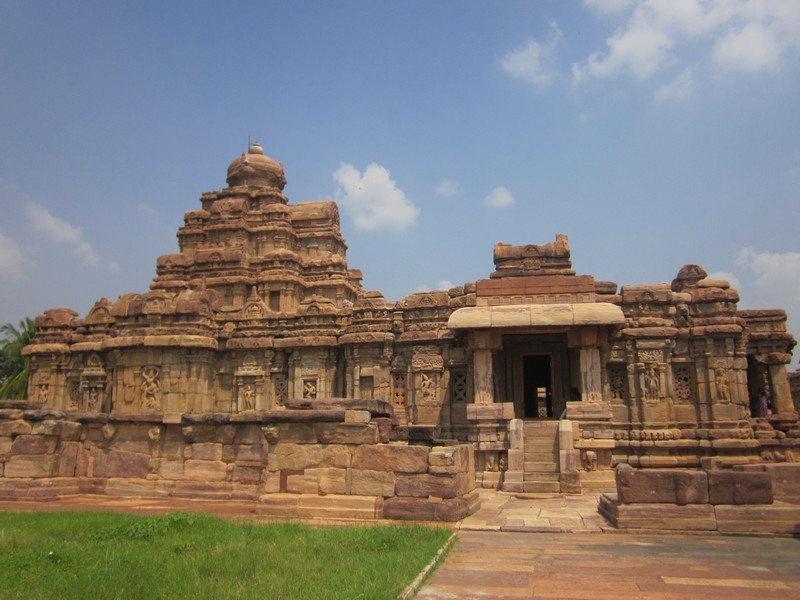
Group of Monuments at Pattadakal
Situated in the southern State of Karnataka, Pattadakal group of monuments are famous for their harmonious blend of architectural forms of northern and southern India. Pattadakal, the capital of the Chalukya dynasty of medieval India, is 22 km away from Badami and 514 km from Bangalore. This famous world heritage site consists of a group of ten major temples, each displaying interesting architectural features.
Built in the 7th and 8th centuries, the Pattadakal monument was famous for royal coronation called ‘Pattadakisuvolal’. Temples constructed here mark the blending of the Rekha Nagara Prasada and the Dravida Vimana styles of temple building. The oldest temple at Pattadakal is the simple but massive Sangamesvara built by Vijayaditya Satyasraya (A.D. 697-733).
The Mallikarjuna and the Virupaksha temples at Pattadakal, were built by two queens of Vikaramaditya II, to commemorate the victory of the Chalukyas over the Pallavas. Virupaksha temple, built by Queen Lokamahadevi, was originally called Lokeshwara. This temple is built in the southern Dravida style and is the largest in the enclosure. It has a massive gateway and several inscriptions.
Virupaksha temple also served as a model for the Rashtrakuta ruler to carve out the great Kailasa at Ellora. The sculptural art of the early Chalukyas is characterized by grace and delicate details. The ceiling panels of the navagrahas, dikpalas, the dancing Nataraja, the wall niches containing Lingodbhava, Ardhanarisvara, Tripurari, Varahavishnu, Trivikrama bear ample testimony to the sculptor’s skill as well as the cult worship that was in vogue. The narrative relief’s illustrating certain episodes from the Ramayana, Mahabharata, Bhagavata and Panchatantra fitted well with these grand religious edifices.
The Jambulinga Temple at Pattadakal has a fine figure of the Dancing Shiva with Nandi (bull) & Parvathi by his side. Built with a northern style tower, there is a horse-shoe arched projection on its facade.
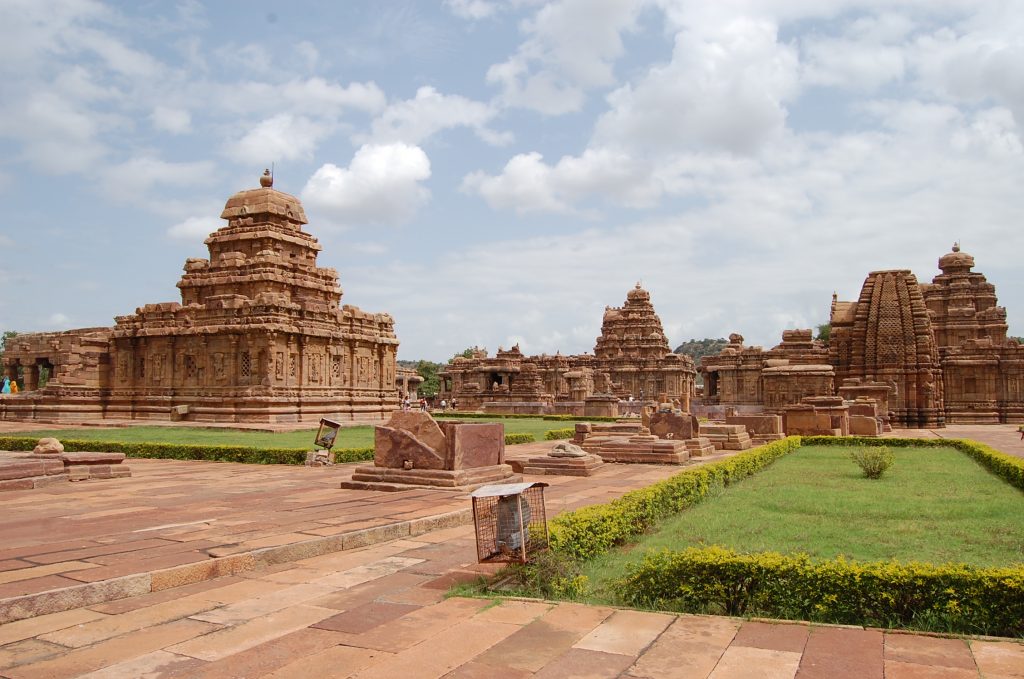
The Chandrashekhara and Kadasideeshwara are the other major temples here, and Pattadakal also has a Jaina basadi of Rashtrakuta times with two beautiful elephants in front.
How to Get There
Bengaluru is the gateway to Pattadakal. It is well connected with all major cities of the country.

BY AIR
Nearest domestic airport to Pattadakal is Belgaum whereas, Bengaluru is the nearest international airport.

BY RAIL
Badami is the nearest rail head to Pattadakal. Private cabs are available on hire.

BY ROAD
Buses to Pattadakal are available from all major cities like Bengaluru, Belgaum, Bijapur, and Hubli.



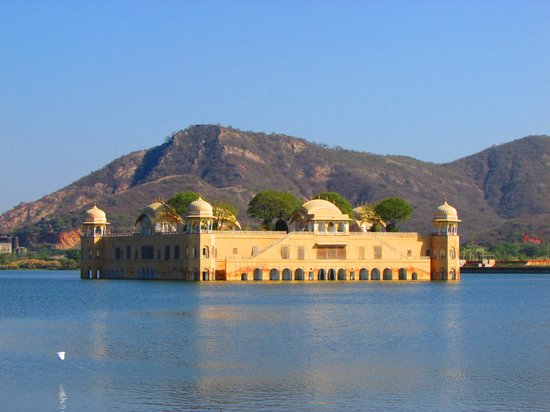
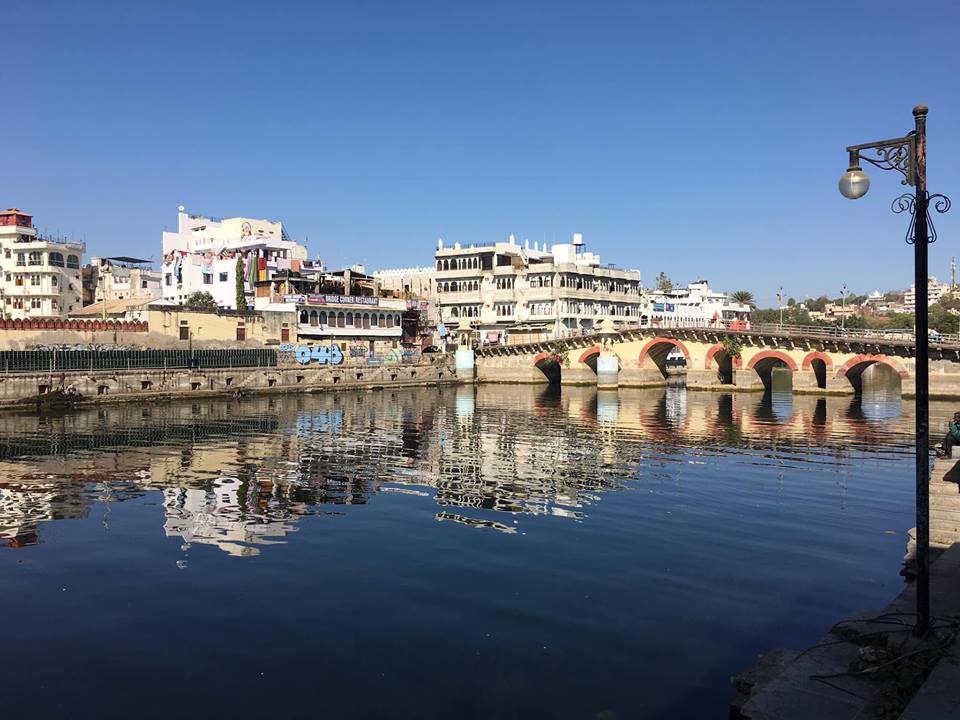
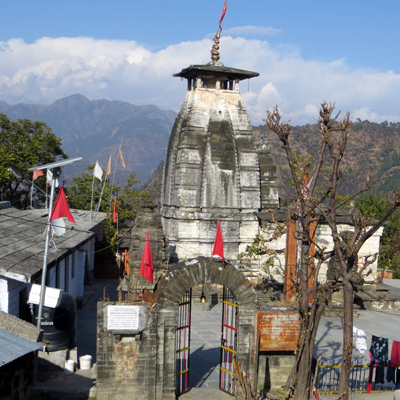

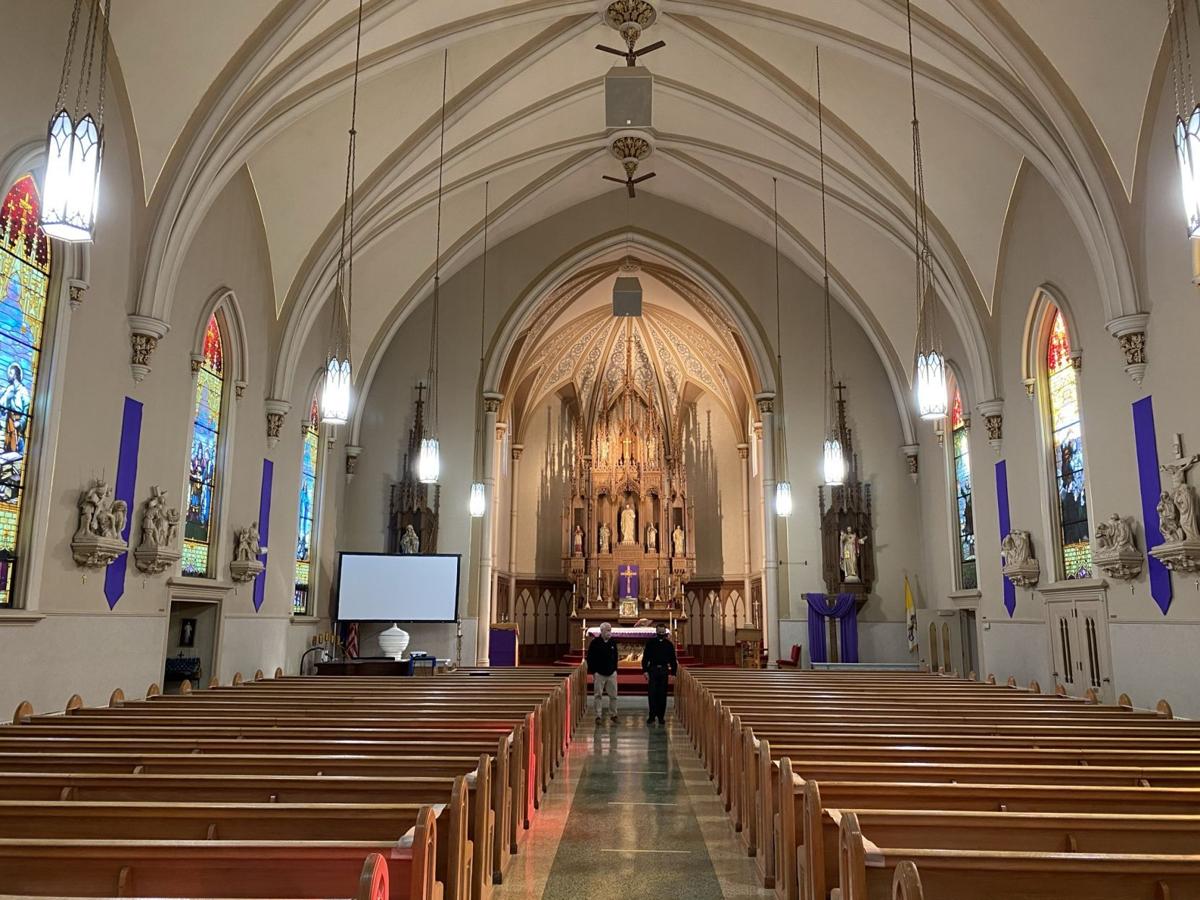

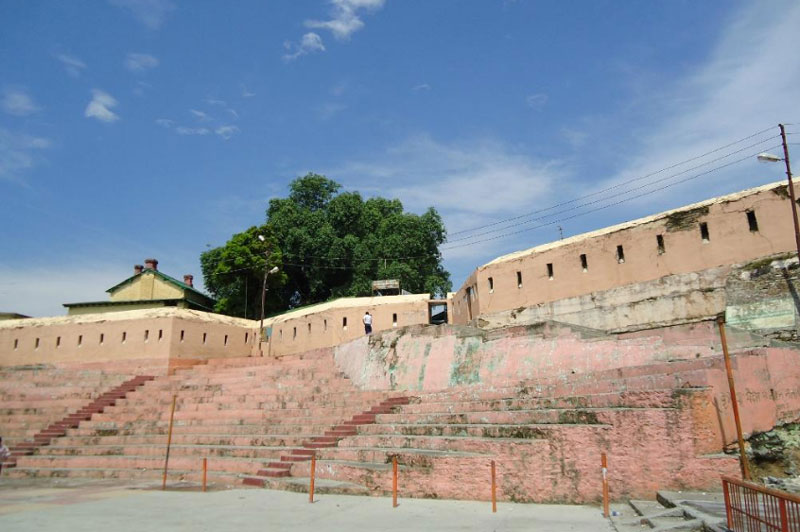



28 Comments
Comments are closed.